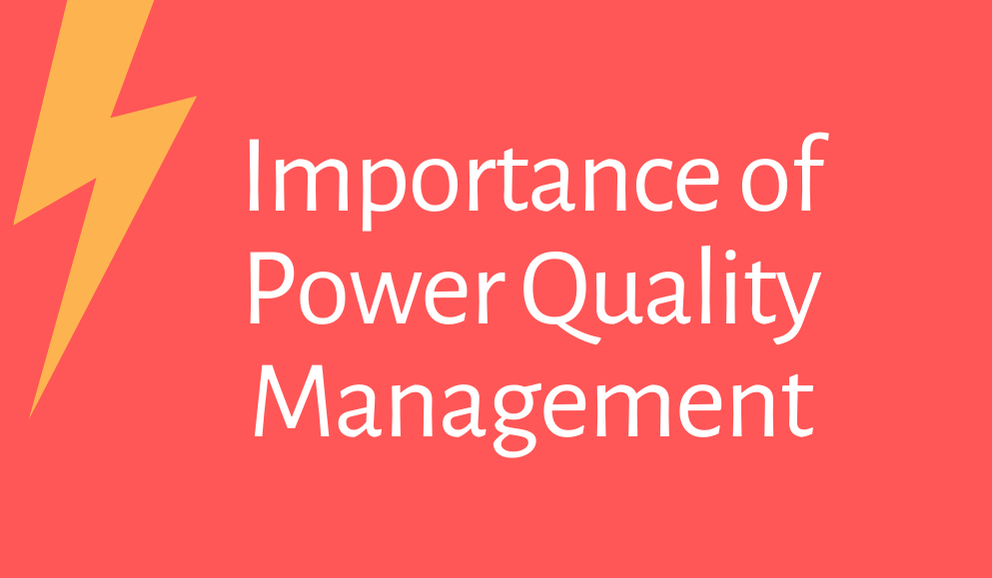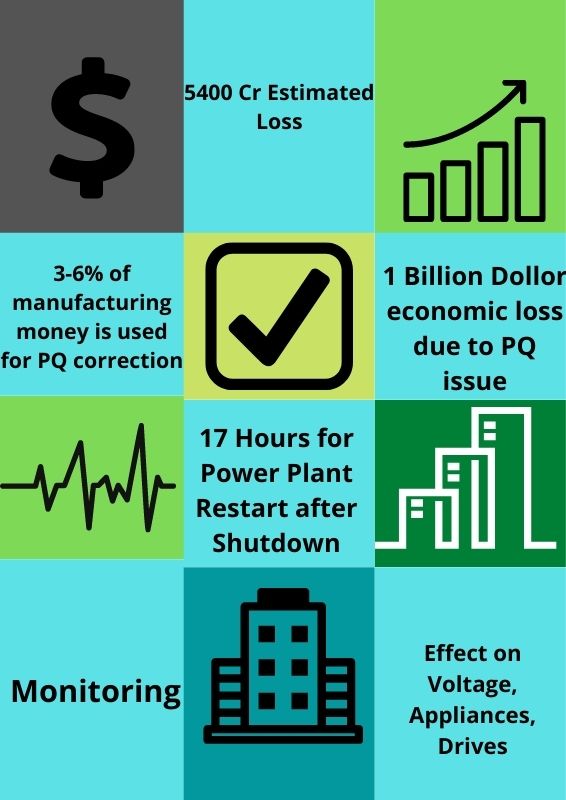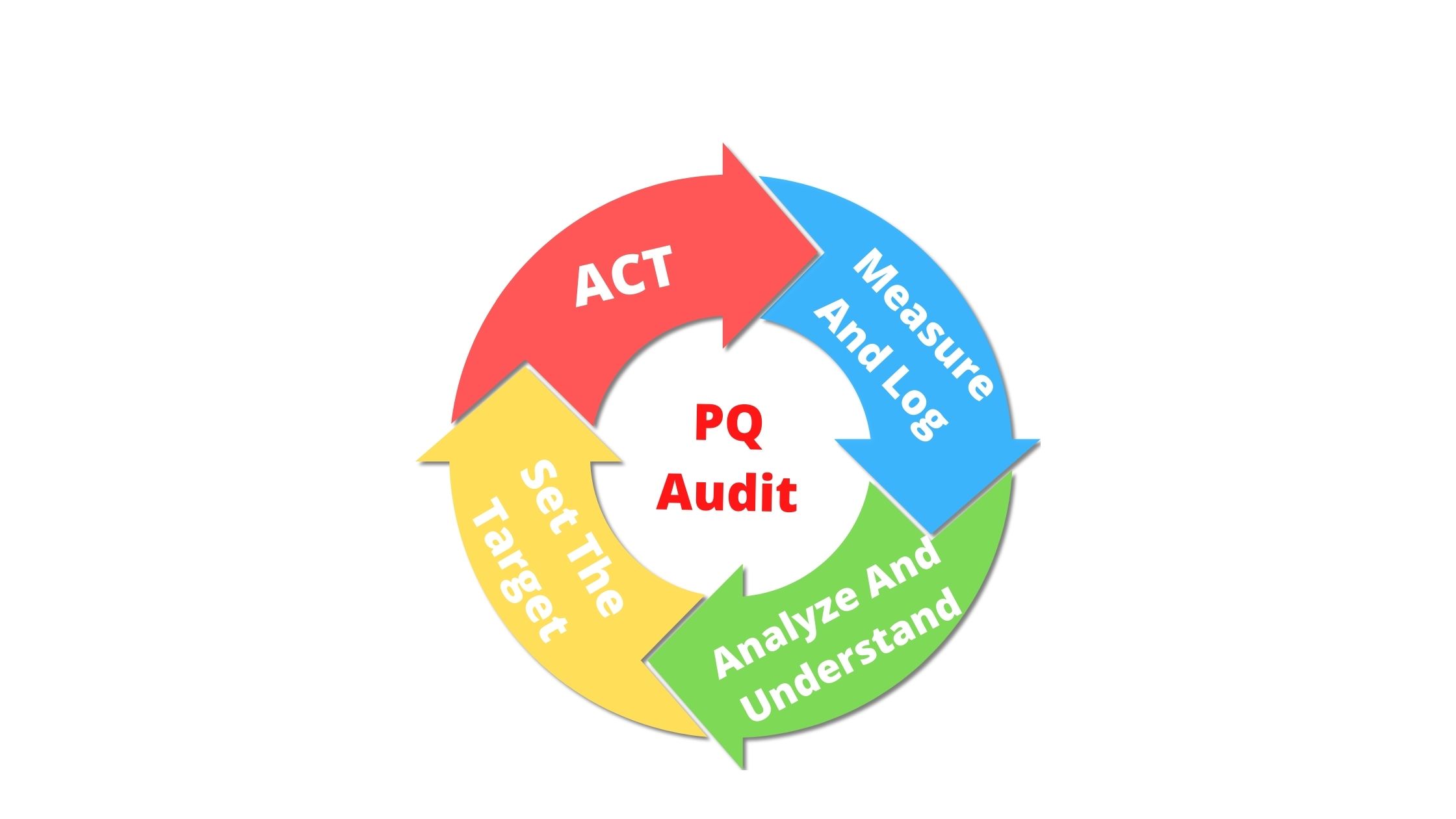Importance of Measuring Power Quality.

More and more electronics on board are pivotal in making industrial processes more productive and efficient. However this trend makes industrial process equipment vulnerable to power quality problems. A study conducted by International cooper Alliance in 2012 covering 13 sectors in 3 southeastern countries shows that the economic impact due to poor power quality is around 1 Billion dollars per annum. In Indian scenario just because of poor power factor the estimated loss in transmission is around 5400 Cr.
Few Impacts of Power Quality
- Overheating of transformers, motors and cables
- Reduction in available capacity of transformers and switchgear
- Excess neutral currents
- Power factor capacitor failures
- Spurious operations of fuses, circuit breakers and other protective equipment
- Increased failure of electronic devices
- Capacity limits on standby generators and UPS systems
- Higher losses in transformers, motors, cables leading to higher power bills.
Generally industries are more focussed on direct energy consumed by their machines, but there are plenty of events in an year for a typical industry where they experiences huge indirect costs in forms of plant downtime, equipment replacement, lost work in process and additional labor due to UNMONITORED power quality issues. An MSME in Hyderabad has observed their power factor deviated from the required norms and immediately done a onetime assessment of their study and compensated with required capacitor banks. Later on the same has been left unmonitored. Due to some internal problem one capacitor got failed and since the system was left unmonitored the unbalance that got created in the bank has shown its impact on rest of the capacitor that led to the failure of entire bank. Sometimes these kinds of failures may lead to shorting of the line and may cause a trip. Instead if this bank was monitored continually for certain important parameters necessary corrective action would have been deployed on time.
Just let’s look at trouble with over voltage…
Most of the industries except for those who are under compliance try to study and address the problems of poor power factor and rest others don’t pay much attention towards this issue. An over voltage when applied in excess of 410-415 V till 425-430 V doesn’t cause any immediate problem in the system until exceeds the overvoltage setting. But if we carefully monitor the systems entire energy consumption patterns along with over voltage variations then the amount of unnecessary energy losses will be realised. Apart from this even failure rates of lights and motors can be avoided if monitored and corrected these kinds of power quality issues on priority.

Indirect Benefit with Continuous Monitoring of Power Quality Parameters:
LED’s are very sensitive to voltage fluctuations and the warranty will go void if the damage is caused due to voltage fluctuations. If the system is monitored for basic power quality parameters then the same can be utilised a supporting material to cover the product under warranty if the cause of failure is not originally due to voltage fluctuations. Sometimes monitoring power quality parameters doesn’t fetch you a direct cost benefit but helps in avoiding costs indirectly in multiple ways.
Power Quality problem is not so simple…
Recent days if any equipment failure is experienced with unknown root cause analysis, people started claiming it as power quality issue. But power quality problem not that simple and is again sub divided in to many categories like Voltage sag, swell, unbalance, flickering, transients, lagging power factor etcetera. And for each power quality problem has to be addressed in a different way and without knowing the exact reason for the said poor power quality required solution cannot be deployed. A continuous monitoring of required basic power quality parameters will definitely help the industry in saving huge direct and indirect costs.

Conclusion..
The vast majority of power quality problems experienced by industries can be attributed to sags, harmonics, and transients. However, several other power quality conditions can also disrupt processes and equipment, such as swells, under voltages, over voltages, interruptions, DC offsets, notching, noise, voltage fluctuations, and frequency variations. Mitigation solutions exist for all of these types of conditions, but the most important step that needs to be taken to reduce the capital and operational costs that are a direct result of power quality is to have the capability tocontinuously measure, detect, and visualize power quality events and conditions.
Power quality monitoring is similar to energy monitoring in which they measure voltage and current.However, there are much higher processing and computational requirements in order to detect, capture, and measure power quality events that can be of high frequency and sub-cycle duration. Moreover, in order to plan mitigation strategies, visualization software is necessary to view waveforms and analyse the captured data. An orthopaedic surgeon is unlikely to take any kind of action without taking an X-ray first. Similarly, in order to know the correct power quality mitigation actions to take, proper measurement is required. Power quality events can last microseconds and happen sporadically, but these same events can be extremely detrimental to the reliability of production. To “prescribe” a solution, the complete picture is required